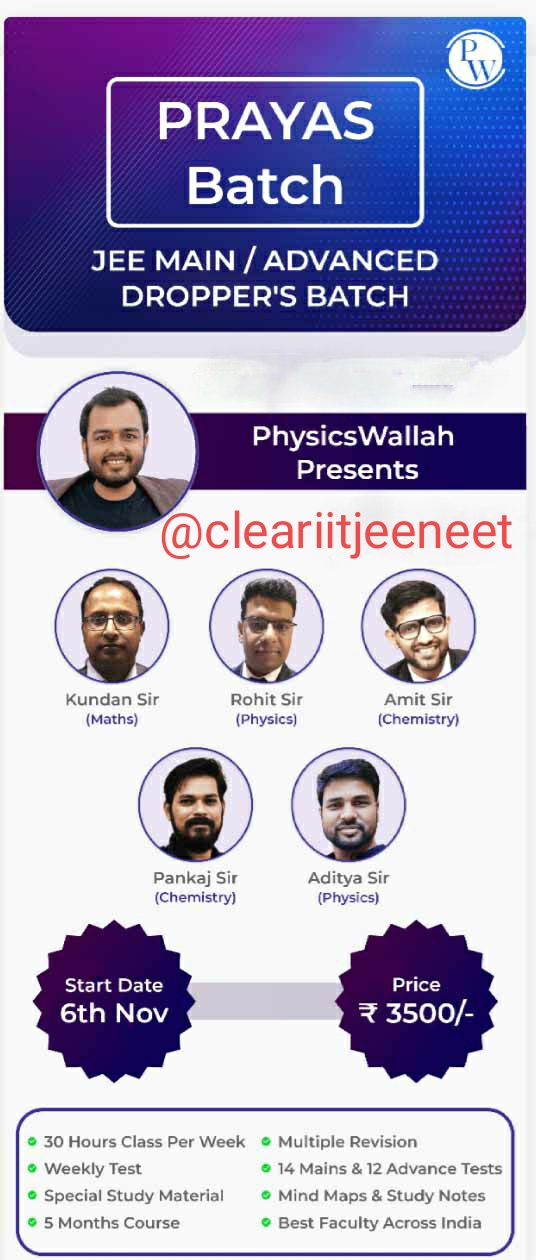🔰 Important Notes on P-Block Elements – Nitric Acid 🔰
✍️ Hyponitric acid does not exist. The rest three mentioned are commonly occurring oxoacids of nitrogen. Hyponitrous acid, H2N2O2 is an isomer tautomer of nitramide, with the structure of the former being HON = NOH. Nitrous acid, HNO2 is usually formed in the atmosphere prior conversion to nitric acid. It is highly unstable.
✍️ Nitric acid is a very weak reducing agent since it has a polar O – H bond. This breaks to donate the H+ ion which is why it is a strong oxidizing agent and a strong acid. Since there is only one cleavable O – H bond, the basicity of nitric acid is unity (one HNO3 molecule can donate only 1 H+ ion). It exists as a planar molecule in vapor phase.
✍️ The most appropriate lab scale preparation method of nitric acid, HNO3 is using an alkali nitrate salt and react it with concentration nitric acid in a glass retort. Nitrous acid being highly unstable decomposes into nitric acid. The other two sets of reaction represent the industrial process of manufacturing nitric acid i.e. Ostwald’s process.
✍️ Ostwald’s process is the name of the industrial process to manufacture nitric acid in bulk. It involves the oxidation of ammonia which forms nitric oxide. This is then reacted with more oxygen to produce nitrogen dioxide. Subsequently, nitrogen dioxide is dissolved in water to produce adequate concentrations of nitric acid. Contact process is used to produce sulfuric acid. Solvay is used to obtain sodium carbonate and Haber-Bosch to obtain ammonia.
✍️ Pt-Rh gauze sheet is widely used as the catalyst in ammonic oxidation, the first step of Ostwald’s process. Fe2O3 is used in Haber’s process; V2O5 in contact process and Zn (Hg) is used in Clemmensen reduction of aldehydes.
✍️ Experimentally, it is determined that nitric acid and water form a constant boiling azeotrope at 68% – 32% by mass composition, respectively. Here, it becomes impossible to separate water and nitric acid by distillation methods. Thus, concentrated sulfuric acid is used for dehydration and removal of water.
✍️ The products released depend on the concentration of nitric acid. In case of zinc metal, diluted nitric acid treatment release nitrous oxide and concentrated nitric acid causes the release of nitrogen dioxide.
✍️ Aluminum does not dissolve in nitric acid. This is because treatment with nitric acid results in the formation of a tough oxide layer. This oxide layer prevents it from further reacting with the oxide. Hence, the compound formed is Al2O3 i.e. aluminum (III) oxide.
✍️ Pickling of stainless steel is the process of removal of a thin layer of the alloyed metal from the surface. The common reagent used is nitric acid along with calculated amounts of hydrofluoric acid.
✍️ 1 mole of sulfur, S8 requires 48 moles of concentrated nitric acid. The reaction is given by S8 + 48HNO3 → 8H2SO4 + 48NO2 + 16H2O. 10, 4 and 20 moles of concentrated nitric acid is required to produce iodic acid, carbon dioxide and phosphoric acid from 1 mole of iodine, carbon and phosphorus, respectively
P-BLOCK ELEMENT Mnemonics:
This block contains non-metal, semi-metal and poor metals. P-BLOCK element the last six group of the periodic table(group 13 to 18) have their own valence electron.
GROUP 13 is known as Boron group and it consist of Boron(B),Aluminium(Al),Gallium (Ga),Indium(In),and Thallium(Ti).
MNEMONIC for this group:
B A G I T
Or
Bal Gaye Indian Tel se
Group 14 consist of Carbon(C),Silicon(Si),Germanium (Ge),Tin(Sn),and lead(Pb)and known as carbon group
MNEMONIC for this group:
Chemistry Sir Gives Sanki Problems
Or
CaSi Gaye Sant Prabhu 🙏
Group 15 includes Nitrogen(N),Phosphorus(P),Arsenic(As),Antimony(Sb),and Bismuth(Bi) and known as nitrogen group.
MNEMONIC for this group:
Nahi Pasand Aisa Sab bhai
Or
Na Pas, Sab Bakwas
GROUP 16 contains Oxygen(O) sulphur (S), Selenium(S), Tellurium(Te), and Polonium(Po) and are these are known as oxygen group.
MNEMONIC for this group:
Oh! Style Se Tel Polish
Group 17 Fluorine (F), Chlorine(Cl),Bromine(Br),Iodine(I),and Astatine(At) and these groups are known as Halogens.
MNEMONIC for this group:
Fir Call Karne Bahaar AayI Aunty
Group 18 consist of Helium (He), Neon (Ne), Argon (Ar), Krypton (Kr), Xenon (Xe), and Radon (Rn) and known group of noble gasses except Helium.
MNEMONIC for this Group:
He Never Arrived; Kara Xero Run pe Out




![Apni Kaksha: Class 12 CHEMISTRY NEW Notes By Aman Dhattarwal [PDF]](https://blogger.googleusercontent.com/img/b/R29vZ2xl/AVvXsEiJEJlbEducqHJUvmJbGdu4kQoEYsMU6AhUegt89jJ244Dyq00koPixzl6EXyK3o7-KkqavMHk22zOiVo4vygHKlXf02Sm6MWYYMRtEyy6P8ClGSbubw0XeMKwaQkEyg0rICJlZMAnmc20/w680/IMG_20200903_162439.jpg)













0 Comments